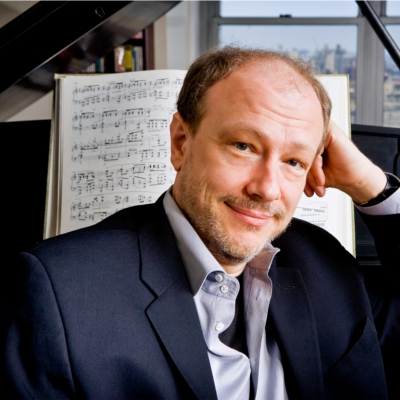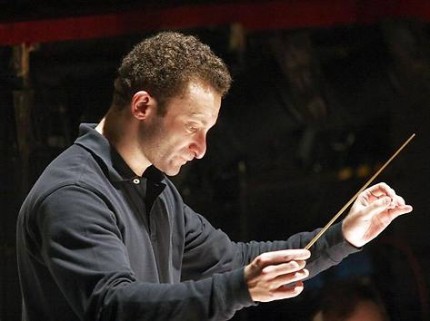With a belated debut, CSO serves up admirable program of Russian rarities

This week’s Chicago Symphony Orchestra program could be titled “Less familiar works by familiar Russian composers,” with Rachmaninoff, Shostakovich and Mussorgsky represented by relatively rare repertoire.
In addition to the Chicago debut of conductor Kirill Petrenko, Thursday’s program also marked the belated CSO subscription bow of pianist Marc-André Hamelin, who, amazingly, has only performed once previously with the orchestra, at Ravinia in 1998.
Petrenko, who takes the reins at the Bavarian State Opera next year, recently wrapped up a highly praised run of Khovanshchina at the Met, and began the evening with two orchestral excerpts from Mussorgsky’s long-neglected opera.
For most of the past century, music from this bleak, uber-Russian work was best-known in arrangements by Rimsky-Korsakov, a completion necessitated by the chaotic state of the scores left by the early death of the dissolute Mussorgsky. Petrenko wisely opted for Shostakovich’s 1958 retooling instead. The opening Prelude is less subtly colored than in Rimsky’s more iridescent version, but Shostakovich’s clear-cut scoring sounds more authentically like Mussorgsky.
Petrenko led a refined and unsentimnetal account of the Prelude, followed by the opera’s frenzied Dance of the Persian Maidens. The two excerpts were enhanced, respectively, by lovely evocative solos from clarinetist Stephen Williamson and English hornist Scott Hostetler.
The evening’s centerpiece was Shostakovich’s Piano Concerto No. 1. Written as a performing vehicle for himself in 1933, the concerto hails from Shostakovich’s youthful enfant terribe period—the icon-smashing Fourth Symphony, which would cause the composer such grief with Stalin’s cultural commissars, would come two years later. Scored compactly for strings and solo trumpet, the work is more a satiric deconstruction of the great Russian concerto tradition with a wry, ironic quality predominating
Hamelin is one of the most probing and insightful keyboard artists of our day, but in the scherzo-like opening movement, the cerebral Canadian pianist didn’t seem quite like the right fit for this romp of a piece, his playing sounding unfocused and wanting in bold projection.
In the second movement, Hamelin seemed to find his bearings, discovering a surprising depth in the Lento with inward playing of tender expression, aided by the elegant strings under Petrenko. The third movement Moderato—largely a solo cadenza—led into the antic finale where Hamelin blazed through the bravura effectively and proved in synch with Shostakovich’s garrulous humor.
The prominent trumpet part almost makes this work a duo-concerto and Chris Martin’s flamboyant, personality-plus playing was a triumph throughout. With a big rounded tone and faultless technique, Martin played with tonal elegance and huge panache, throwing off the finale’s sardonic horse-race fanfares and lightning-fast coda with dizzying virtuosity.
Repeated ovations brought Hamelin back out for an encore. The familiar opening notes of Mozart’s Sonata in C major, K.545, provoked surprised laughter coming after Shostakovich’s madcap finale, but Hamelin’s poised, luminous playing made it seem like just the right apertif, the pianist bringing out the gentle, lyric simplicity.

The program closed with Rachmaninoff’s Symphony No. 3, his final work in the genre.
Rachmaninoff’s Third Symphony, completed in 1936, is a kind of coming to terms with his own Late Romantic style, melding the lush expansiveness of the Second Symphony with a harder, less romantic modern era. The melodic vein is there—as in the cellos’ lyrical second theme of the opening movement—yet the style is tauter and tougher. Slow movement and scherzo are combined and the music seems even more jumpy and mercurial than previously. Strikingly at this late stage of his life, Rachmaninoff seemed more interested in exploring new colors and timbres, with scoring that includes celesta, bass clarinet, and large percussion battery.
Petrenko proved a generally admirable guide through this work, opting for a mix of tonal refinement and sharp attacks at climaxes. At times one felt that he could have been less literal with markings—this attractive but rather uneven score needs all the help it can get—and some stodgy tempos and the overemphatic final chords made the work seem rather lumbering and episodic at times.
Overall, this account of the Third Symphony made it feel like a transitional Rachmaninoff work en route to a new style that the composer didn’t live to see to fruition. The playing of the orchestra was inspired with a genuinely exciting closing Allegro and the rhapsodic lyricism of the Adagio nicely etched. Hornist Daniel Gingrich and violinist Stephanie Jeong provided especially fine solo moments.
The program will be repeated 8 p.m. Saturday. cso.org; 312-294-3000.
Posted in Performances


